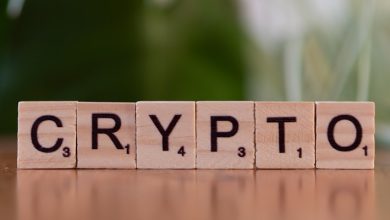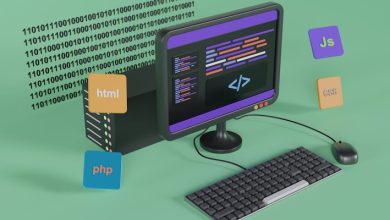How to Mine Cryptocurrency: A Beginner’s Guide

- How Cryptocurrency Mining Works
- Choosing the Right Hardware for Mining
- Setting Up Your Mining Rig
- Joining a Mining Pool
- Understanding Mining Rewards
- Tips for Successful Cryptocurrency Mining
How Cryptocurrency Mining Works
Cryptocurrency mining is the process of validating transactions on a blockchain network. Miners use powerful computers to solve complex mathematical problems that confirm transactions and add them to the blockchain. This process requires a significant amount of computational power and energy.
Miners are rewarded with newly minted coins for their efforts in maintaining the security and integrity of the network. The more computational power a miner contributes, the higher the chance of successfully mining a block and earning a reward.
To start mining cryptocurrency, you need to download mining software that is compatible with the specific cryptocurrency you want to mine. You also need a mining rig, which is a specialized computer system designed for mining.
Once you have set up your mining rig and software, you can join a mining pool to increase your chances of successfully mining a block. Mining pools allow miners to combine their computational power and share the rewards based on the amount of work contributed.
Overall, cryptocurrency mining is a competitive and energy-intensive process that requires specialized hardware and software. However, it can be a profitable venture for those willing to invest the time and resources into it.
Choosing the Right Hardware for Mining
When it comes to **choosing** the **right** **hardware** for **mining** **cryptocurrency**, there are a few **factors** to consider. **First**, you need to **determine** what type of **cryptocurrency** you plan to **mine**. Some **cryptocurrencies** are better **suited** for **mining** with **ASIC** (**Application**-Specific Integrated Circuit) **miners**, while others can be **mined** with **GPUs** (**Graphics** Processing Units) or even **CPUs** (**Central** Processing Units).
**Next**, you’ll want to **consider** the **hash rate** of the **hardware** you’re **looking** at. The **hash rate** is essentially the **speed** at which a **mining** machine operates. The **higher** the **hash rate**, the more **efficient** your **mining** operation will be. However, **higher** **hash rates** often come with a **higher** **price** tag, so you’ll need to **balance** cost with **performance**.
**Another** **important** **factor** to **consider** is **power** **consumption**. **Mining** **cryptocurrency** can be **energy** **intensive**, so you’ll want to **choose** **hardware** that is **energy** **efficient**. **ASIC** **miners** are typically the most **efficient**, followed by **GPUs**, and then **CPUs**.
**Lastly**, you should **think** about **upgradability**. **Technology** in the **cryptocurrency** **mining** **industry** is constantly **evolving**, so it’s **important** to **choose** **hardware** that can be easily **upgraded** in the **future**. This will help **ensure** that your **mining** operation remains **competitive** in the long **run**.
Setting Up Your Mining Rig
After choosing the right hardware for mining cryptocurrency, the next step is **setting up** your mining rig. **Setting up** a mining rig can be a complex process, but with the right guidance, it can be done efficiently. Here are some steps to help you **set up** your mining rig successfully:
1. **Assembly**: Assemble all the hardware components of your mining rig, including the motherboard, CPU, GPU, RAM, power supply, and storage. Make sure all components are securely connected and in the proper slots.
2. **Software Installation**: Install the necessary operating system for mining, such as Windows or Linux. You will also need to install mining software, such as **NiceHash** or **MinerGate**, depending on the cryptocurrency you plan to mine.
3. **Configuration**: Configure your mining software by entering the pool address, wallet address, and other settings required for mining. Make sure to optimize your settings for maximum efficiency.
4. **Testing**: Before starting to mine, it is essential to test your mining rig to ensure everything is working correctly. Check the temperatures of your components, the hash rate of your GPU, and the stability of your system.
5. **Mining**: Once you have completed all the necessary steps, you can start mining cryptocurrency. Monitor your mining rig regularly to ensure it is running smoothly and efficiently.
By following these steps, you can **set up** your mining rig and start mining cryptocurrency successfully. Remember to stay informed about the latest developments in the cryptocurrency market to optimize your mining process.
Joining a Mining Pool
When it comes to mining cryptocurrency, joining a mining pool can be a smart move for beginners. Mining pools allow miners to combine their resources and increase their chances of mining a block and receiving a reward. Instead of competing against each other, miners work together towards a common goal.
Joining a mining pool is relatively easy. First, you’ll need to choose a mining pool that aligns with your mining goals and preferences. Look for a pool with a good reputation, a reasonable fee structure, and reliable performance. Once you’ve selected a pool, you’ll need to create an account and configure your mining software to connect to the pool’s servers.
After you’ve successfully joined a mining pool, you can start mining with other miners and increase your chances of earning rewards on a more consistent basis. Keep in mind that while mining pools can be beneficial for beginners, they also come with their own set of challenges, such as sharing rewards with other miners and potential pool downtime.
Understanding Mining Rewards
When it comes to mining cryptocurrency, understanding mining rewards is essential. Miners are rewarded for their efforts in securing the network and processing transactions. These rewards typically come in the form of newly minted coins as well as transaction fees.
One key concept to grasp is the idea of block rewards. **Block rewards** are the incentives given to miners for successfully adding a new block of transactions to the blockchain. The most common way to receive these rewards is through a process called **Proof of Work**, where miners compete to solve complex mathematical puzzles. The first miner to solve the puzzle gets to add the block to the blockchain and receives the associated rewards.
In addition to block rewards, miners can also earn transaction fees. Whenever a transaction is processed on the blockchain, a small fee is usually attached to it. Miners can collect these fees as part of their rewards for processing transactions. **Transaction fees** can vary depending on network congestion and the priority given to a particular transaction.
It’s important for miners to understand the potential rewards they can earn from mining cryptocurrency. By successfully adding blocks to the blockchain and processing transactions, miners can accumulate a significant amount of cryptocurrency over time. However, it’s also important to consider the costs involved in mining, such as electricity and hardware expenses.
Overall, mining rewards play a crucial role in incentivizing miners to secure the network and process transactions. By understanding how these rewards work, miners can make informed decisions about whether mining is the right choice for them.
Tips for Successful Cryptocurrency Mining
To ensure successful **cryptocurrency mining**, follow these tips:
– **Choose the right cryptocurrency to mine**: Select a **cryptocurrency** that aligns with your **mining** goals, whether it’s **Bitcoin**, **Ethereum**, or another **digital currency**. Research the **cryptocurrency** market to determine which one offers the best **mining** opportunities.
– **Invest in quality hardware**: **Cryptocurrency** **mining** requires powerful hardware, such as **ASIC** miners or **GPUs**. Investing in high-quality equipment will increase your **mining** efficiency and **profitability**.
– **Join a mining pool**: **Mining** pools allow **miners** to combine their resources and increase their chances of **mining** a **block**. By joining a **mining** pool, you can earn **cryptocurrency** more consistently and reduce the impact of fluctuations in **mining** difficulty.
– **Secure your wallet**: **Cryptocurrency** **mining** rewards are stored in a **digital wallet**, so it’s essential to keep your **wallet** secure. Use **encryption** and two-factor authentication to protect your **mining** earnings from **cyber** threats.
– **Stay updated on industry trends**: The **cryptocurrency** market is constantly evolving, so it’s crucial to stay informed about the latest trends and developments. Follow **industry** news and **forums** to stay ahead of the curve and make informed decisions about your **mining** operation.
By following these **tips**, you can increase your chances of success in the **cryptocurrency mining** industry and maximize your **profitability**.




